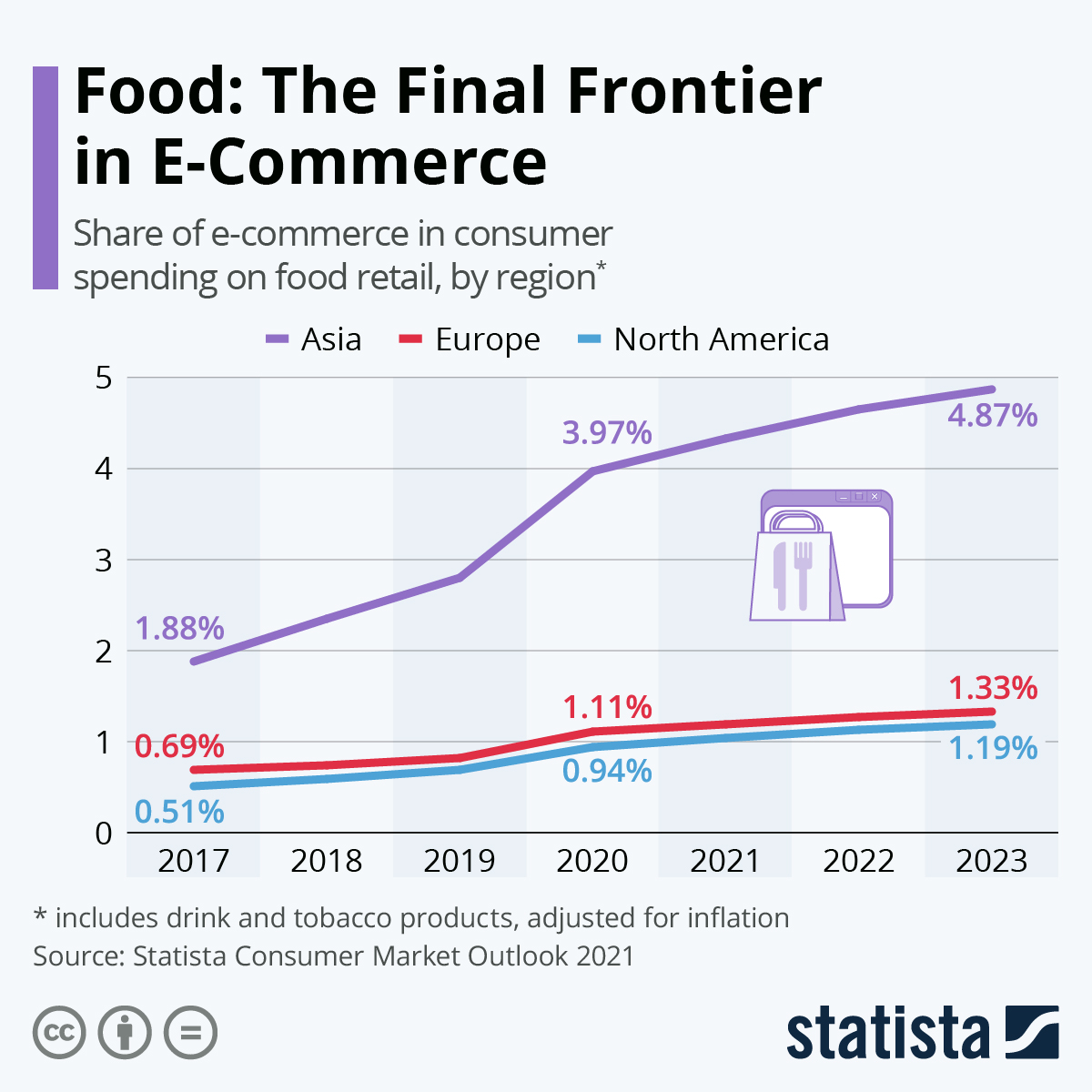Despite ongoing digitization and a focus on e-commerce during the coronavirus pandemic, online spending as a share of food retail is expected to remain in the single digits at least for the first half of this decade. According to the Statista Digital Market Outlook, a coronavirus boost is most detectable in Asia, where the online share of food retail spending is expected to have increased from less than 3 to almost 4 percent in 2020.
In Europe and North America, the online food budget was still at around 1 percent of all spending, showing that the segment still has a long way to go. Especially in countries with a large rural population, like the United States, e-commerce services are harder to establish.
There are of course more obvious factors making food e-commerce a hard business to establish – from the need to cool products to the low-priced but heavy and bulky nature of some food items. Vendors in China have recently been successful at tackling some of these barriers, for example establishing group buying schemes where food items are ordered in bulk and distributed independently among neighbors or friend groups. South Korea is a second country in Asia where high revenues with online food sales have been achieved.





















